Submitted by Berrin Chatzi Chousein
Architecture Competitions:WHY?
Turkey Architecture News - Jul 14, 2013 - 16:07 6911 views
NEW DOCUMENTARY SHINES A LIGHT ON THE SURREAL REALITY OF ARCHITECTURE COMPETITIONS
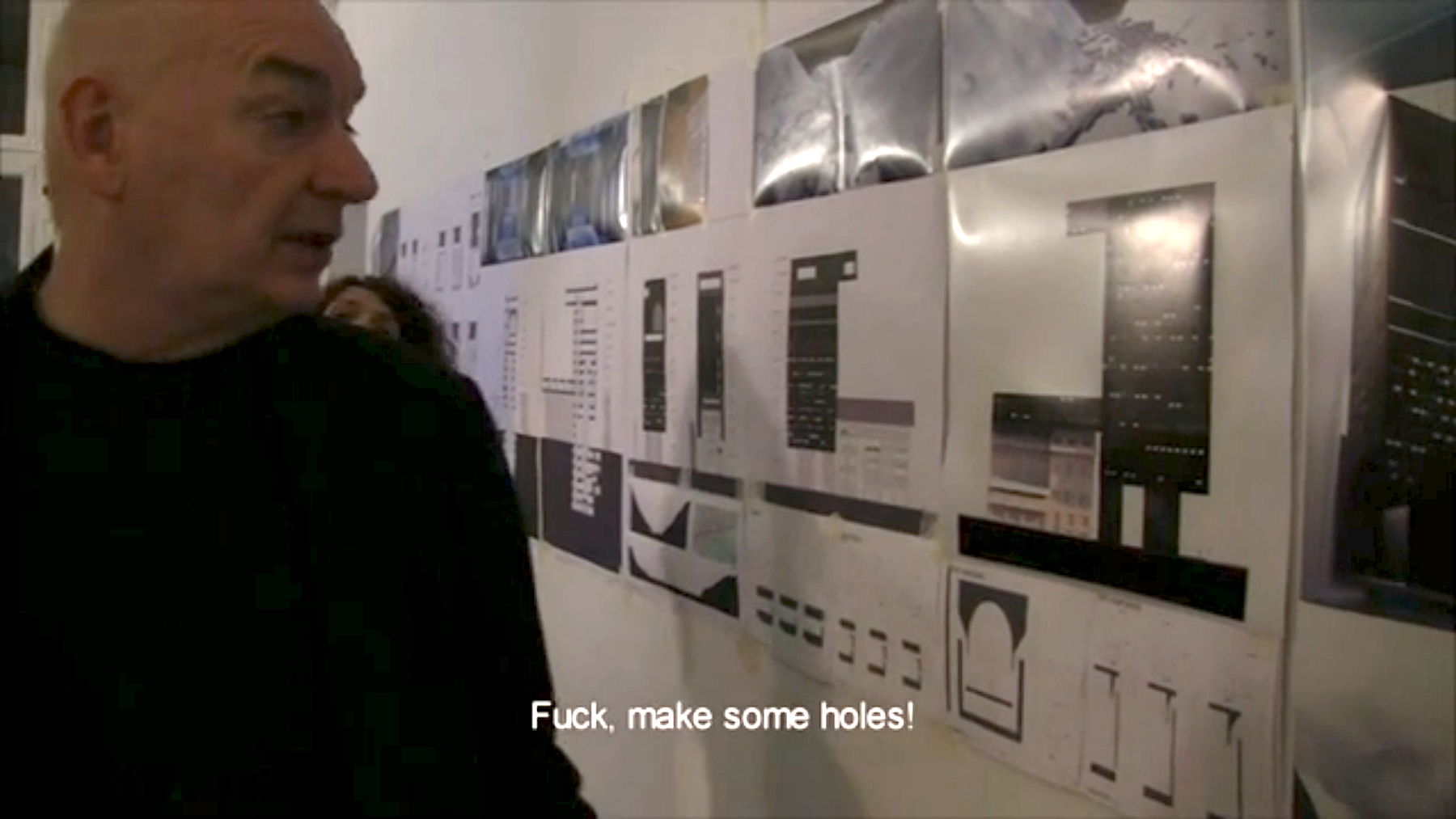
“THE COMPETITION” DOCUMENTARY SHOWS HOW THINGS GO DOWN IN THE OFFICE. HERE, NOUVEL’S INSTRUCTIONS TO HIS ASSISTANTS ARE PRETTY CLEAR-CUT.
The Competition is a documentary following the story of an architecture competition: the race to win the contract for Andorra's National Museum. Following the spectacle from gunshot to finish line, director Angel Borrego Cubero shows us what we already know about the architecture industry − but from the outside it looks a little absurd.
In 2008 the tiny country of Andorra, nestled in the Pyrenees, decided to amp up its culture industry by building a national museum. This museum, ostensibly kick-starting Andorra’s rise to premium tourist destination for skiers, was to be designed by one of the world’s premiere architects. A competition was announced – open to the anybody with a Pritzker or “similar qualifications” – and five architects took up the challenge: Jean Nouvel, Frank Gehry, Dominique Perrault, Zaha Hadid, and Norman Foster.
Spanish architect Angel Borrego Cubero directed and produced a recently-released documentary charting the whole process, from initial announcement and brief through proposal development and final presentations by each architect. Surprisingly, this is the first no-holds barred documentary chronicling an architecture competition – or perhaps it’s not surprising, given the culture of secrecy shrouding such events. Who would want the inner workings of his or her office exposed for judgment or idea-theft? Apparently not Norman Foster: he immediately dropped out of the competition upon learning it would be filmed.
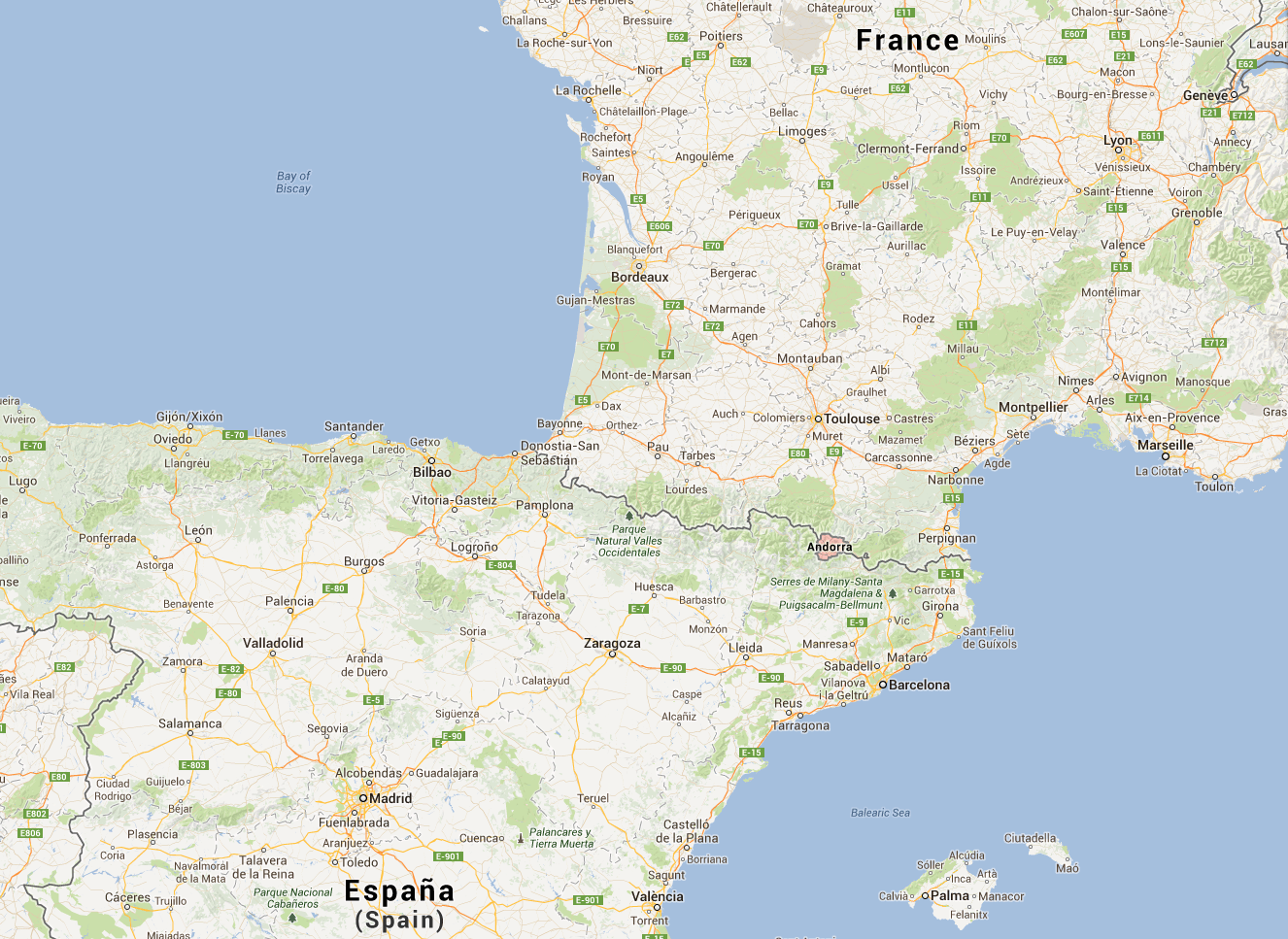
THE TINY COUNTRY OF ANDORRA NEEDED A NATIONAL MUSEUM TO BOOST ITS TOURIST REVENUE. CUE MAJOR ARCHITECTURE COMPETITION.
Zaha Hadid is also notably absent from the movie. She clearly denied open access to her studio for filming, and we never see her in the flesh; her essence is only transmitted via her diplomatic, rigidly nervous assistant. Indeed, in watching the film it’s the teams of assistants, renderers and model-builders in each office who we get to know. The architects swoop in occasionally to approve or veto ideas, scrutinizing the projects their teams have molded, and ultimately judging whether it looks like something they might have thought up themselves or not.
The foulest reigning office-monarch is Jean Nouvel, whose abuse of his assistants is less nuanced than a Disney villain’s. His performance, exaggerated to the point of self-parody, reads as a clear branding tactic. One of the main aspects of architecture that this movie gets across is that of public identity and self-marketing. The architects are all warped in some way by the anxieties that come with fame, and their assistants by their dedication to upholding the consistency of said fame. (Perrault, the only Pritzker-less competitor, is markedly jumpier than the rest.)
Each proposal is finally presented/sold to the Andorran government by the architects (bar Zaha: regrettably unavailable). It’s a joy to behold the varied styles of the pitches. Frank Gehry is clearly a front-runner, his tactic for selling his piles of glued-together models basically being “Hey – you want a Gehry? I’ll make you a Gehry, no problem. I can make it in any color you want, for real cheap.” Perrault, on the other hand, presents an extravagant tree metaphor, insisting his glass tower will meld seamlessly with the cultural life of the city. His is a less popular aproach.
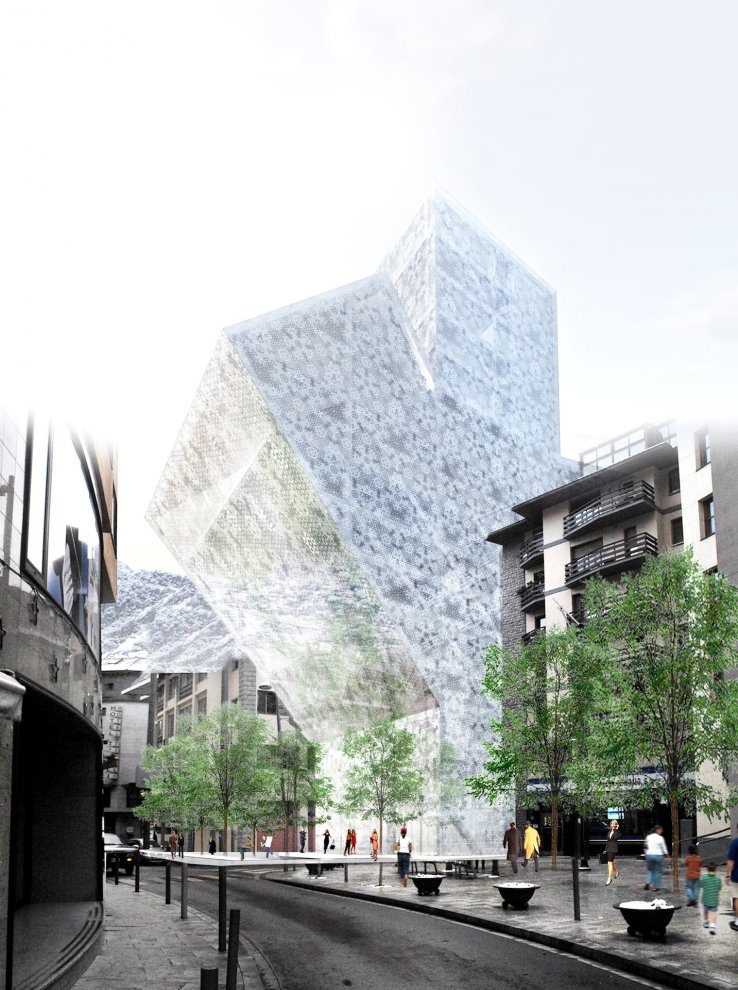
DOMINIQUE PERRAULT’S MUSEUM PROPOSAL WAS A COLLOSSAL GLASS TOWER WITH THREE BRANCHES, INSPIRED BY ANDORRA’S...TREES. (PHOTO: DOMINIQUE PERRAULT)
The Competition is Cubero’s first movie. As an architect – he runs the Madrid-based Office for Strategic Spaces – his familiarity and curiosity with the profession clearly comes across. While, as a work, it’s a bit uneven, this is mostly due to the differing amounts of access given to film in each studio, a structural flaw that arguably strengthens it by highlighting the elements of secrecy and restriction. The movie lacks authorial voice, its narrative basic and chronological, but this allows the raw material to shine through. The strength of this material is not its shock value − since many of its office-scenarios are exceedingly familiar − it’s that while watching mostly-banal events unfold from a third-person perspective, a predictable choreography emerges, and in its predictability it starts to seem absurd. Maybe spending exorbitant amounts on models is the status quo, but when we see the confused, sour expression on Nouvel’s face when his assistant says “it will only be 40,000 − not much,” the weirdness of the situation hits home. Or when two members of Perrault’s staff, succumbing to exhaustion and frustration, decide their model works better upside-down, every member of the audience smiles in self-recognition. We all like to see ourselves from the outside sometimes.
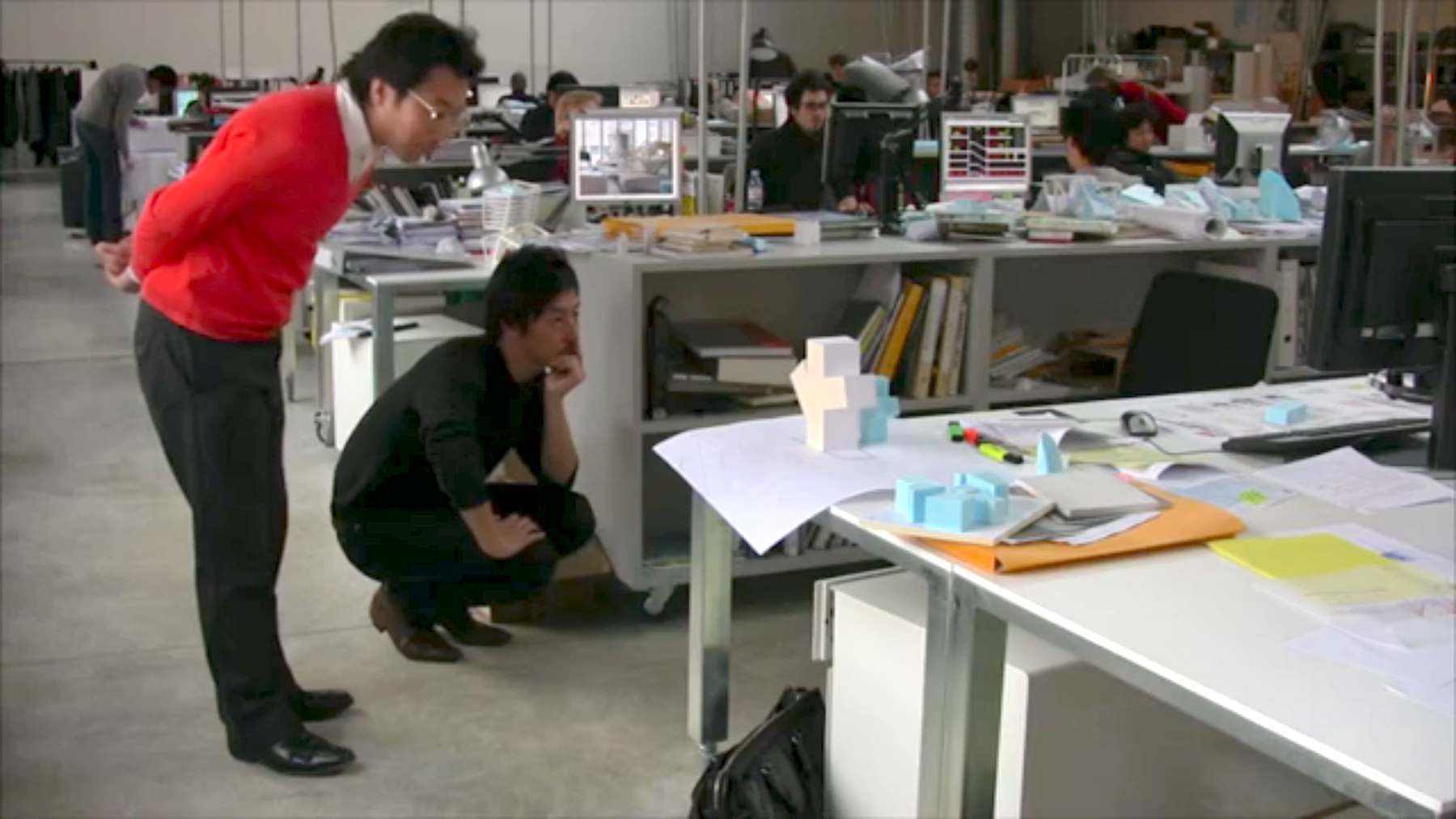
BEHIND THE SCENES: TWO OF PERRAULT’S ASSISTANTS STRUGGLE TO FINALIZE THE PROPOSED TREE SHAPE. TURNING IT UPSIDE-DOWN: VOILÁ!
The competition system doesn’t necessarily make for bad architecture (does it?). But in exposing its inner workings, this movie suggests it’s probably not the most sustainable industry. Everyone in the architecture world, including the jury of last year’s Venice Biennale, insists the starchitect system is “on its way out,” with “participation” and “bottom-up” already well-worn, weary buzzwords. But the red-eyed assistant, face pressed to her monitor at four in the morning, drawing windows onto Nouvel’s façade – someone who’s never been anywhere near Andorra – is not an encouraging sight. Again, this sight is not exactly a revelation − anyone who works in architecture knows what long hours in the office look like. But whatThe Competition emphasizes is that entrenched and ritualized events, like competitions and biennales, are what keep the caste system locked into place. Without serious re-structuring of flows of capital by completely re-thinking the competition process itself, top is going to remain the place where decisions and money is kept.
This particular story, however, ends with a reality check from below. (Spoiler Alert!) In the wake of economic crash, the funding for Andorra’s cultural renaissance bottomed out: the National Museum was never built. No competition winner was declared. A perfectly ironic ending, which tempts one to ask: are competitions in general held for their own sake? Is the whole process about the thrill of the game? If so, the architects who are making the goals and winning the medals aren’t the ones going to team practice.
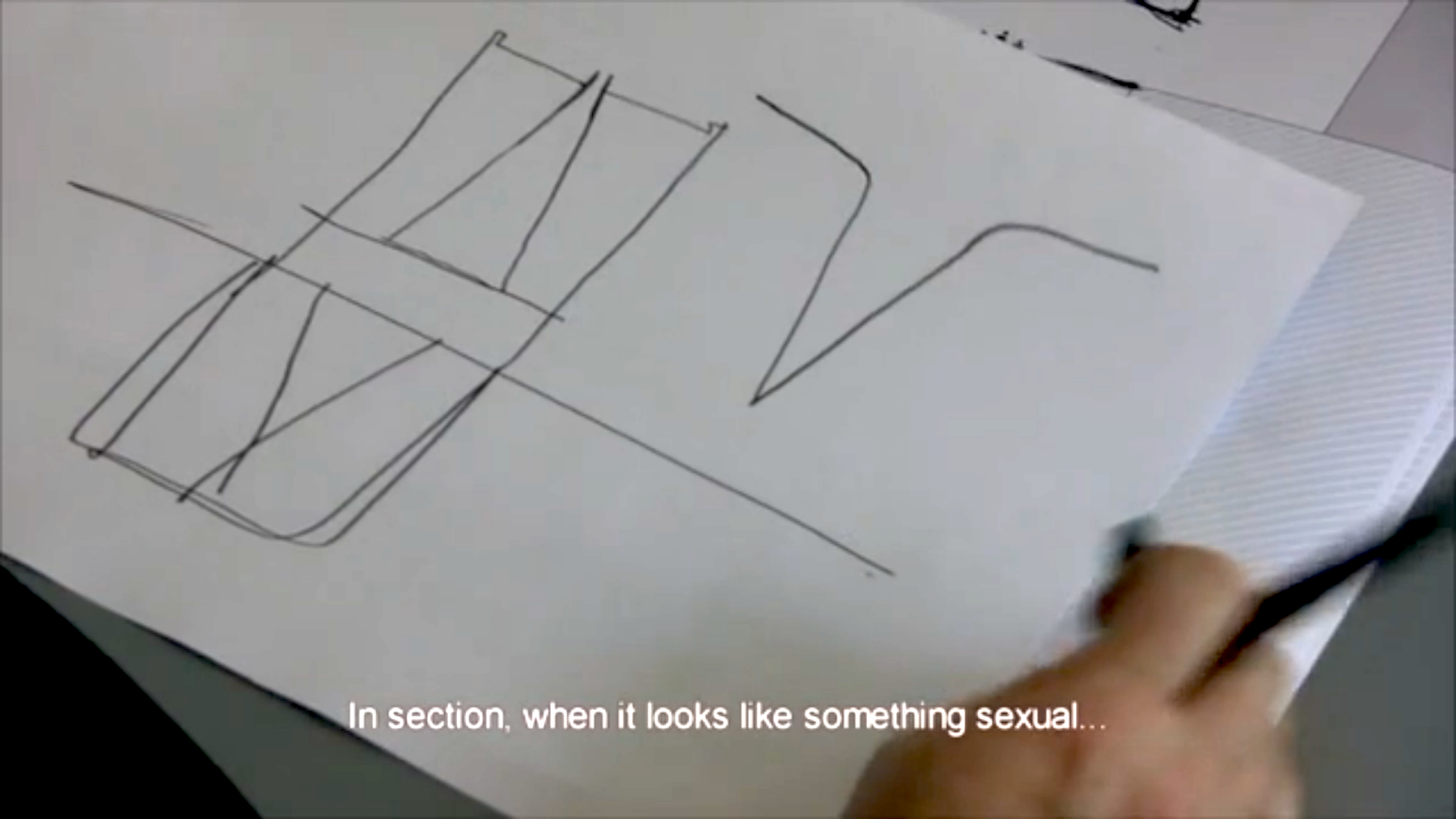
NOUVEL’S MAIN ASSISTANT DECLARES: “IN SECTION, WHEN IT STARTS TO LOOK LIKE SOMETHING SEXUAL...WE ARE CLOSE.”
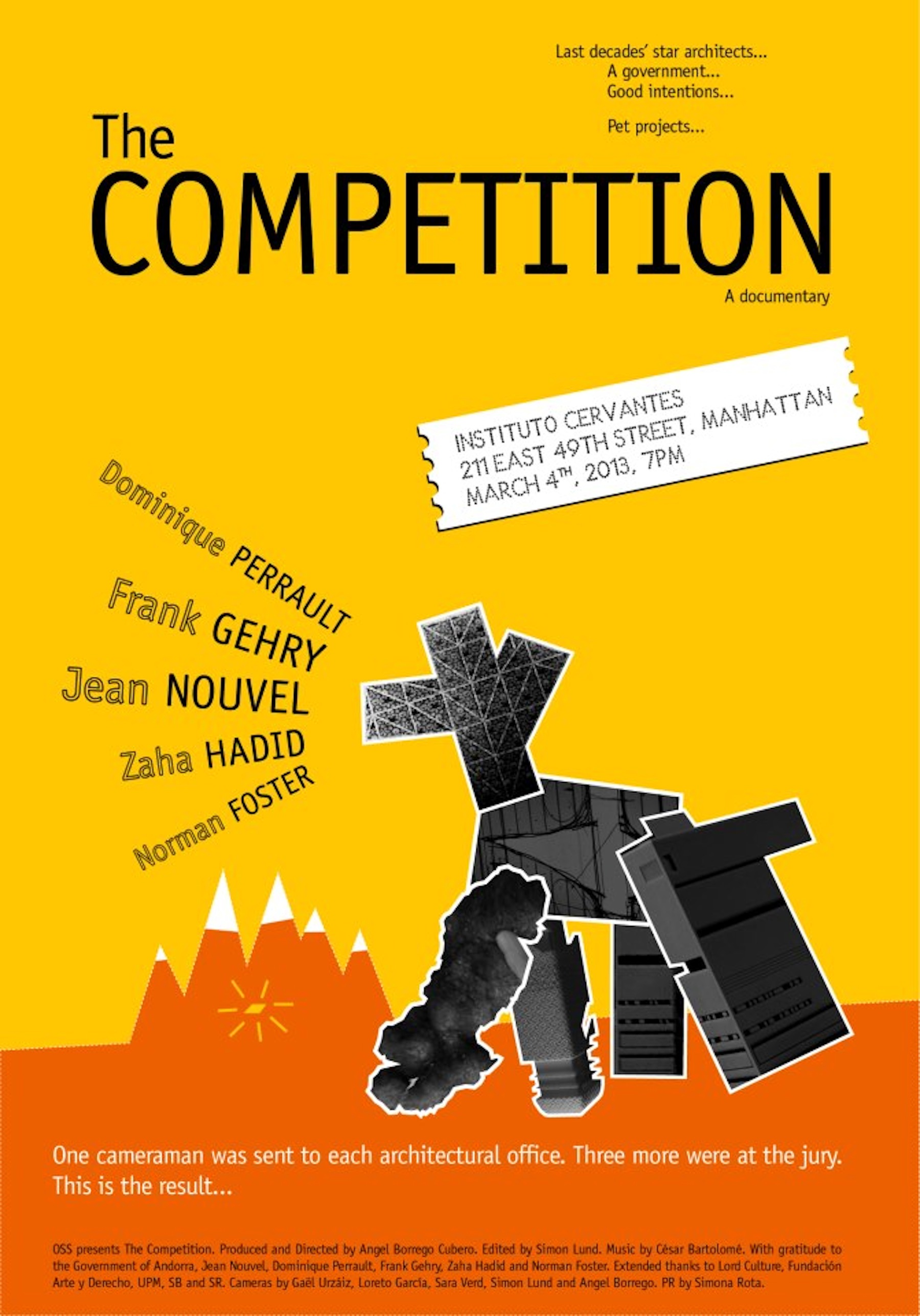
THE MOVIE IS THE FIRST FEATURE-LENGTH DOCUMENTARY ABOUT ARCHITECTURE COMPETITIONS, NOT THE EASIEST TOPIC TO COVER.
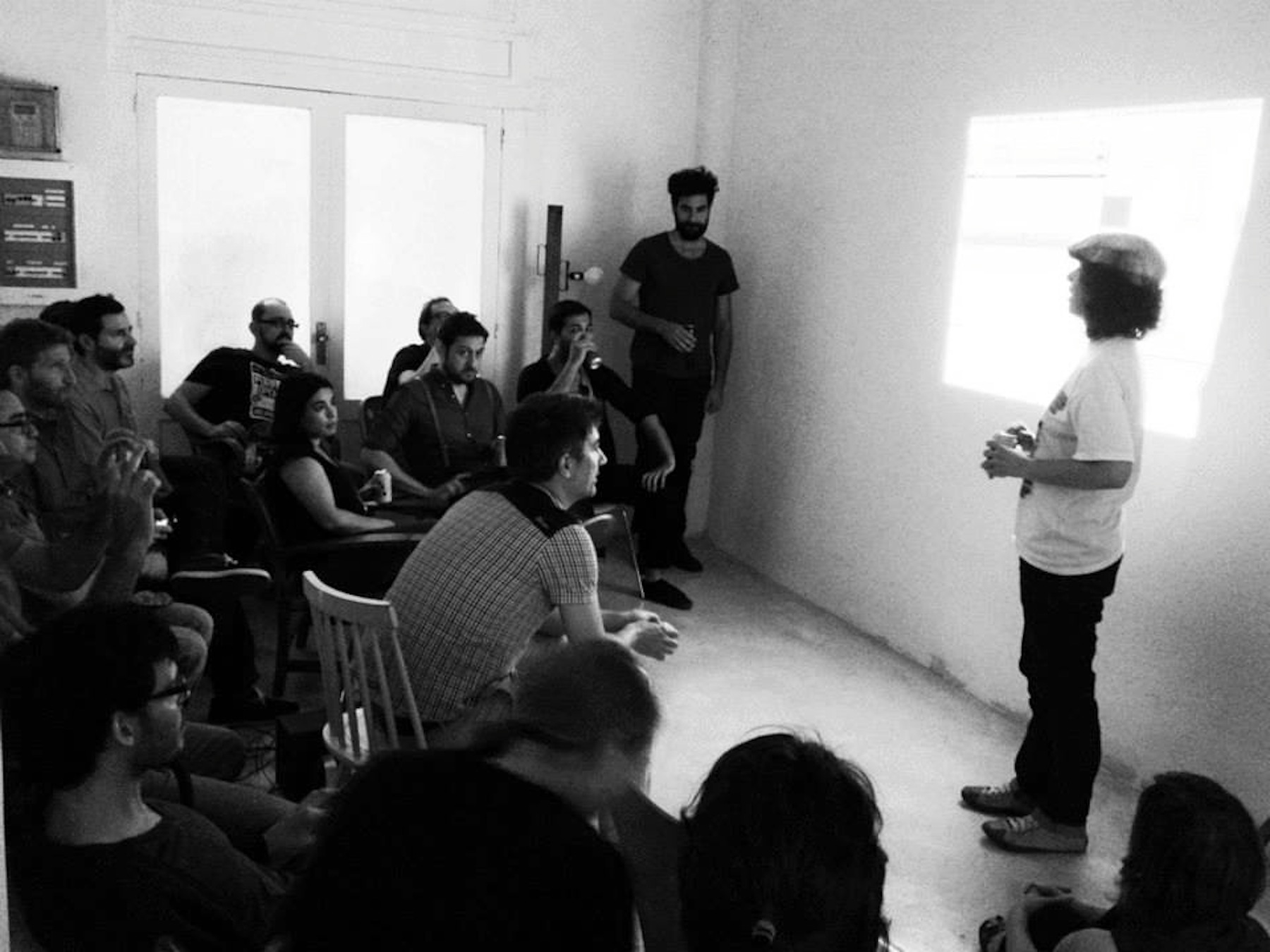
A PRIVATE SCREENING OF “THE COMPETITION” WAS HELD IN JUNE IN BARCELONA BY DPR-BARCELONA AND MAIO ARCHITECTS. COMING SOON TO A WALL NEAR YOU!
> via Uncube
